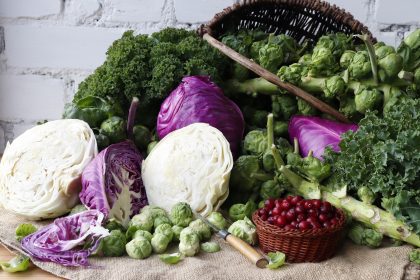Achieving and maintaining a healthy weight can be a challenging journey. For many, the process of losing weight involves not only physical changes but also a significant shift in mindset. The key to sustainable weight loss lies in setting realistic and achievable health goals that focus on improving your relationship with food. By focusing on gradual and mindful changes, you can create a lifestyle that supports weight loss in a healthy and sustainable way.
In this article, we will explore five practical food health goals that can aid in your weight loss journey. These goals are designed to be simple, yet effective, ensuring that you can incorporate them into your daily routine without feeling overwhelmed. They will help you make mindful decisions about what you eat, how you eat and how to create a supportive environment that fosters long-term success. Let’s dive into these goals and discover how they can transform your approach to eating and weight management.
1. Incorporate more whole foods into your diet
One of the most effective ways to support weight loss is to focus on consuming whole, minimally processed foods. Whole foods are rich in essential nutrients like vitamins, minerals, fiber and healthy fats — which are crucial for overall health. They are also lower in added sugars, unhealthy fats and empty calories that can contribute to weight gain.
- Whole foods — such as fruits, vegetables, lean proteins, whole grains and nuts — provide your body with the necessary nutrients without excess calories. They help you feel fuller for longer, reducing the likelihood of overeating.
- Begin by incorporating more fruits and vegetables into each meal. Swap out processed snacks like chips and cookies for healthier options like fresh fruit, nuts or yogurt. Gradually replace refined grains like white bread and pasta with their whole-grain counterparts — such as quinoa, brown rice — and whole wheat bread.
- Choosing whole foods can make you feel empowered and in control of your health. Each meal becomes an opportunity to nourish your body — which can lead to a more positive relationship with food.
2. Practice portion control
Portion control is essential when it comes to managing your weight. Even healthy foods can contribute to weight gain if consumed in large quantities. Learning to recognize appropriate portion sizes can help you consume fewer calories while still enjoying the foods you love.
- Overeating — even with nutritious foods — can lead to an excessive calorie intake. By controlling portions, you can prevent overeating and support a calorie deficit — which is necessary for weight loss.
- Use smaller plates and bowls to help manage portion sizes. Measure out servings of high-calorie foods like nuts, seeds and oils to avoid unintentional overeating. Practice mindful eating by slowing down, savoring each bite and stopping when you feel satisfied, not stuffed.
- Practicing portion control can foster a sense of balance and moderation. It allows you to enjoy your favorite foods without the guilt or worry of overindulgence, promoting a healthier mindset around eating.
3. Limit added sugars and refined carbohydrates
Added sugars and refined carbohydrates can sabotage your weight loss efforts by causing spikes and crashes in blood sugar levels — leading to increased hunger and cravings. Reducing your intake of these foods can help you achieve more stable energy levels and support weight loss.
- Foods high in added sugars and refined carbs — such as sugary drinks, sweets and white bread — provide little nutritional value and can contribute to weight gain. They can also trigger cravings for more sugary foods, making it harder to stick to a healthy eating plan.
- Read food labels to identify and avoid products with high amounts of added sugars. Replace sugary snacks with healthier options like fruit or nuts. Choose whole grains over refined grains, and opt for water, herbal teas or sparkling water instead of sugary beverages.
- Reducing your intake of added sugars and refined carbs can lead to a greater sense of control over your cravings and eating habits. As you begin to feel the benefits of stable energy and reduced cravings, you may find it easier to stay committed to your weight loss goals.
4. Hydrate consistently
Staying hydrated is a simple yet often overlooked aspect of weight loss. Drinking enough water can help control hunger, boost metabolism and support overall health. Sometimes, the body can mistake thirst for hunger, leading to unnecessary snacking and calorie intake.
- Proper hydration aids in digestion, keeps your metabolism functioning efficiently and helps you feel full. Drinking water before meals can also help you eat less by creating a sense of fullness.
- Aim to drink at least eight glasses of water a day, more if you’re physically active. Keep a water bottle with you throughout the day to remind yourself to drink. Add slices of lemon, cucumber or mint to your water for a refreshing twist if plain water feels boring.
- Consistent hydration can improve your mood, energy levels and overall sense of well-being. Feeling refreshed and alert can help you stay motivated and focused on your weight loss journey.
5. Plan and prepare meals in advance
Meal planning and preparation can be a game-changer when it comes to achieving your weight loss goals. When you have a plan in place, you are less likely to make impulsive, unhealthy food choices and more likely to stick to your nutrition goals.
- Preparing meals in advance allows you to control ingredients and portion sizes, making it easier to eat healthily and avoid high-calorie, nutrient-poor foods. It also saves time and reduces the stress of figuring out what to eat on busy days.
- Set aside time each week to plan your meals and snacks. Make a grocery list of healthy foods that support your goals and stick to it while shopping. Prepare meals in bulk — such as salads, grilled chicken or vegetable stir-fries — so you have nutritious options ready to go.
- Meal planning and preparation can give you a sense of accomplishment and structure. Knowing that you have nourishing meals ready can reduce stress and make you feel more in control of your eating habits.
Setting food health goals is not about depriving yourself
Setting food health goals that support weight loss is not about restrictive dieting or depriving yourself of the foods you love. It’s about making mindful, sustainable changes to your eating habits that promote a healthier lifestyle. By incorporating more whole foods into your diet, practicing portion control, limiting added sugars and refined carbohydrates, staying hydrated and planning meals in advance, you can create a supportive environment that fosters long-term success.
These goals are designed to be achievable and adaptable to your lifestyle, making it easier to maintain a healthy relationship with food. As you implement these changes, you’ll likely notice improvements not only in your weight but also in your overall well-being. Remember, the journey to weight loss is unique for everyone, and it’s essential to be patient and kind to yourself along the way. Celebrate each small victory and embrace the positive changes that come with setting and achieving your food health goals.
This story was created using AI technology.
















